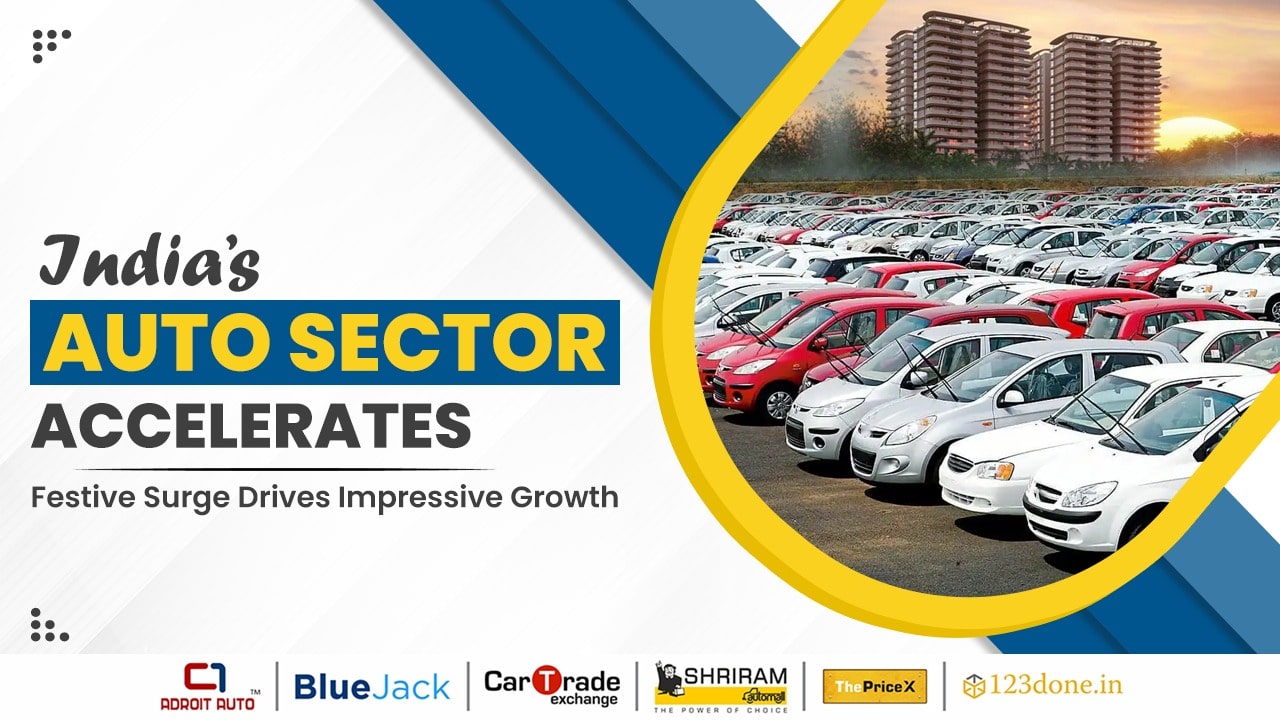India’s Automotive Industry Drives Record Growth: Festive Surge Powers All Segments
Over 15,000 dealer partners across 27,000 outlets nationwide engaged in planting of saplings on Tuesday.

India's automotive industry revved up its engines in October 2023, with robust double-digit growth across passenger vehicles, two-wheelers, and three-wheelers. The festive season played a pivotal role as original equipment manufacturers (OEMs) dispatched a record number of vehicles to meet heightened demand. Here's a closer look at each vehicle segment's performance during this period.
Passenger Vehicles (PV)
In October, the passenger vehicle category reached new heights, totalling 389,714 units, marking a significant 16% YoY increase. This surge is attributed to the sustained demand for Sport Utility Vehicles (SUVs) and Multi-Purpose Vehicles (MPVs), with utility vehicles accounting for 60% of PV sales. While sales of cars and sedans experienced a slight dip, the demand from rural India has shown signs of revival, particularly benefiting market leader Maruti Suzuki.
Two-Wheelers
The two-wheeler segment, comprising scooters, motorcycles, and mopeds, witnessed a remarkable uptick with total wholesales reaching 1.89 million units, a substantial 20% YoY growth. Motorcycles led the charge, recording a 23% YoY growth, with Hero MotoCorp and Bajaj Auto maintaining their dominant positions. The scooter segment, claiming a 47% share of the overall market, also experienced a 15% YoY increase, with Honda continuing to lead with its Activa brand.
Three-Wheelers
The three-wheeler segment echoed the overall industry's success, posting robust figures of 76,940 units in October, indicating a formidable 42% YoY growth. Passenger carriers dominated with a 48% growth, while the goods carrier segment also showed a healthy 13% increase. Notably, the shift toward electric mobility was evident in the three-wheeler sector, with a remarkable 70% YoY growth in the e-three-wheeler sub-segment.
Industry Insights
The proactive measures taken by the Tamil Nadu government to promote the electric vehicle (EV) manufacturing industry align with the broader industry trends. While the automotive sector faced challenges such as the need for cleaner energy sources and potential job losses during the transition to EVs, the state's focus on attracting investments and creating job opportunities has positioned it as a preferred destination for EV manufacturing in Southeast Asia.
In conclusion, India's automotive industry has successfully navigated the challenges and capitalized on the festive fervour, driving impressive growth across vehicle segments. The industry's resilience, coupled with strategic government initiatives, sets the stage for sustained momentum in the evolving landscape of the Indian automotive market.

 Download Our App
Download Our App



